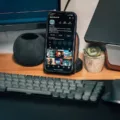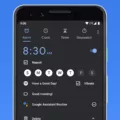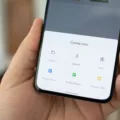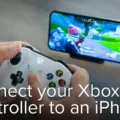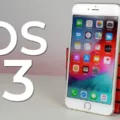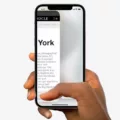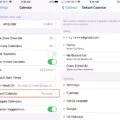In today’s interconnected world, staying connected to the internet is crucial. Whether it’s for work, school, or leisure, having a reliable internet connection is essential. One popular method to access the internet on the go is by using a remote hotspot. This allows you to share your mobile data connection with other devices such as laptops, tablets, or other smartphones.
However, there are instances when remote hotspot functionality fails to work as expected. This can be frustrating, especially when you rely on it for your internet needs. In this article, we will explore what remote hotspot failure means and discuss some troubleshooting steps to help you resolve the issue.
Remote hotspot failure refers to a situation where your mobile device is unable to create a hotspot or share its internet connection with other devices. This can manifest in different ways, such as the hotspot not being visible to other devices, unable to connect to the hotspot, or the hotspot turning off unexpectedly.
Now, let’s delve into some troubleshooting steps to address remote hotspot failure:
1. Verify Network Connection: Start by checking if your mobile device has a stable network connection. Ensure that you can browse the internet and that other network-dependent apps are functioning correctly. If you’re experiencing network issues, contact your service provider for assistance.
2. Restart Your Device: A simple restart can often resolve many technical glitches. Turn off your mobile device, wait for a few seconds, and then turn it back on. This simple step can refresh the device’s system and potentially fix the remote hotspot failure.
3. Check Hotspot Settings: Ensure that the hotspot feature is enabled on your device. Go to the settings menu and look for the “Personal Hotspot” or “Tethering” option. Make sure it’s turned on and configured correctly. You may need to set a password or adjust other settings based on your preferences.
4. Update Device Software: Keeping your mobile device’s software up to date is essential for optimal performance. Check for any available software updates and install them if necessary. Outdated software can sometimes cause compatibility issues with the hotspot function.
5. Reset Network Settings: If the above steps don’t resolve the issue, you can try resetting your device’s network settings. This will remove any saved network configurations and restore them to default settings. Note that this will also remove any saved Wi-Fi passwords, so make sure to have them handy before proceeding.
6. Contact Your Service Provider: If the problem persists, it’s advisable to reach out to your service provider. They can provide further assistance and troubleshoot the issue from their end. They may also check if your wireless plan supports remote hotspot functionality or if there are any specific settings that need to be adjusted.
By following these troubleshooting steps, you should be able to address remote hotspot failure and restore your mobile device’s ability to share its internet connection. However, keep in mind that certain issues may require more advanced technical support or hardware repairs.
Remote hotspot failure can be frustrating, but with the right troubleshooting steps, you can often resolve the issue. Remember to check your network connection, restart your device, verify hotspot settings, update software, reset network settings, and contact your service provider if needed. Stay connected and enjoy the convenience of a remote hotspot wherever you go!
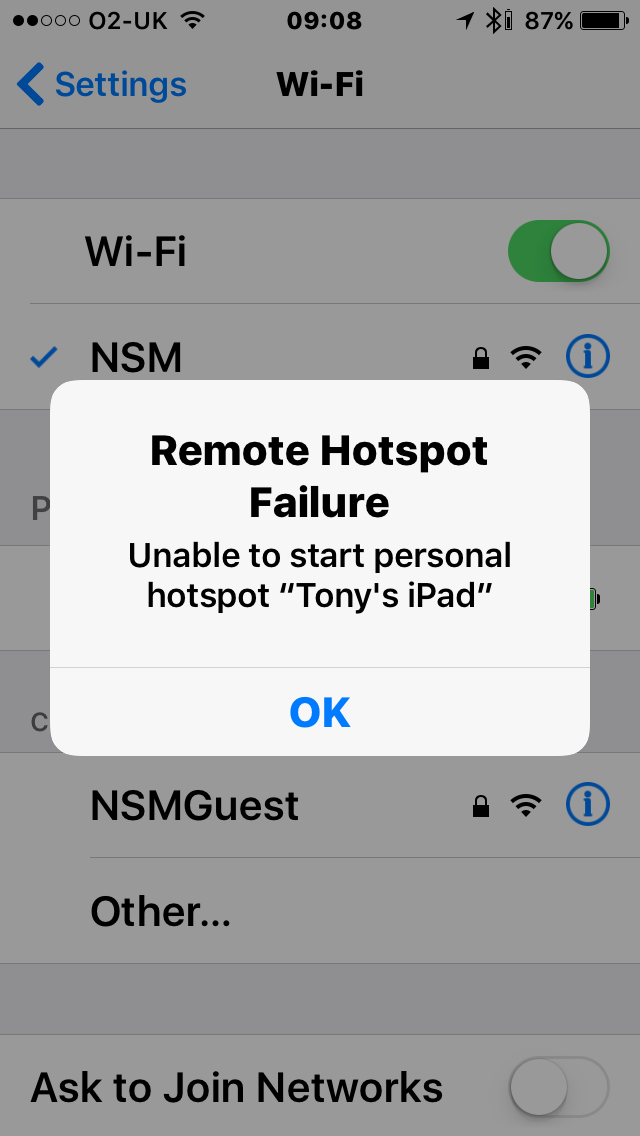
Why is Your iPhone Saying Remote Hotspot Failure?
There could be several reasons why your iPhone is displaying a “remote hotspot failure” message. Here are some possible causes and solutions:
1. Insufficient data plan: Check if your wireless carrier has enabled Personal Hotspot on your data plan. Some carriers may require an additional fee or a specific data plan to use this feature. Contact your carrier to ensure that your plan supports Personal Hotspot.
2. Disabled Personal Hotspot: Make sure that you have enabled Personal Hotspot on your iPhone. To do this, go to Settings > Personal Hotspot and toggle the switch to turn it on. If it’s already turned on, try turning it off and then back on again.
3. Outdated software: Ensure that both your iPhone and the device you’re trying to connect to are running the latest version of iOS or iPadOS. Software updates often include bug fixes and improvements, so updating your devices may resolve any compatibility issues causing the remote hotspot failure.
4. Restart devices: Restart both your iPhone and the device you’re trying to connect to. Sometimes, a simple restart can fix temporary glitches and connectivity issues.
5. Network congestion: If you’re in a crowded area with lots of devices connected to the same network, it may cause congestion and prevent your iPhone from establishing a remote hotspot connection. Try moving to a different location or disabling and re-enabling Personal Hotspot to see if it helps.
6. Hardware or software issues: In rare cases, there may be underlying hardware or software problems causing the remote hotspot failure. If none of the above solutions work, it’s recommended to contact Apple Support or your wireless carrier for further assistance.
Remember, troubleshooting steps may vary depending on your specific iPhone model and carrier. It’s always a good idea to consult official documentation or seek professional support if you’re unsure or unable to resolve the issue on your own.
How Do You Fix Your Hotspot Failure?
To fix hotspot failure on your Android device, you can try the following steps:
1. Toggle Airplane Mode: Swipe down from the top of your screen to access the Quick Settings menu, and tap on the Airplane mode icon to turn it on. Wait for a few seconds, and then toggle it off again. This can help reset your mobile data and Wi-Fi connections.
2. Reboot your Android phone: Press and hold the power button on your device, and select the “Restart” option. This can help refresh your device’s settings and resolve any temporary issues.
3. Disable Android’s Battery Saver Mode: Open the Settings app on your Android device, and go to the Battery section. Disable the Battery Saver mode if it is enabled, as it can restrict certain functions, including hotspot usage.
4. Turn off your VPN app: If you have a VPN (Virtual Private Network) app enabled on your device, try disabling it temporarily. VPNs can sometimes interfere with hotspot functionality.
5. Change the AP Band for your hotspot connection: Open the Settings app, and go to the Wi-Fi or Network & Internet section. Tap on the Hotspot & Tethering option, and then select the Wi-Fi hotspot settings. Look for an option called “AP Band” or “Frequency Band,” and change it from the default setting to a different band, such as 2.4 GHz or 5 GHz, depending on your device and available options.
6. Disable the “Turn Off Automatically” option: In the hotspot settings, check if there is an option called “Turn off automatically” or something similar. If it is enabled, disable it. This option can automatically disable your hotspot if no devices are connected, so turning it off can ensure your hotspot stays active.
7. Use Bluetooth Tethering on Android: If your Wi-Fi hotspot is still not working, you can try using Bluetooth tethering instead. Open the Settings app, go to the Bluetooth section, and pair your Android device with the device you want to share the internet connection with. Then, enable the Bluetooth tethering option in the hotspot settings.
If none of these steps resolve your hotspot failure issue, you may need to contact your mobile carrier or consider resetting your device to factory settings as a last resort.
Why is Your Internet Hotspot Not Connecting?
There can be several reasons why your internet hotspot is not connecting. Here are some possible causes:
1. Incorrect settings: Check if you have set up your hotspot correctly. Ensure that the hotspot feature is enabled on your device and that the correct network name (SSID) and password are entered.
2. Limited coverage: Hotspots rely on cellular data or a Wi-Fi connection. If you are in an area with poor signal or limited Wi-Fi coverage, your hotspot may not connect. Move closer to a Wi-Fi router or try connecting in a different location.
3. Network congestion: If there are too many devices connected to the same Wi-Fi network or cellular tower, it can cause network congestion and affect your hotspot connection. Disconnect unnecessary devices or try connecting at a different time when network usage is lower.
4. Data plan limitations: Some mobile carriers impose restrictions on hotspot usage, such as data caps or speed throttling. Check your data plan to ensure that you have sufficient data allowance and that your hotspot usage is not restricted.
5. Software or firmware issues: Outdated software or firmware on your device can cause connectivity problems. Make sure your device’s operating system and hotspot firmware are up to date. Consider restarting your device or performing a software update.
6. Incompatible devices: Not all devices are compatible with every hotspot. Check if the device you are trying to connect to the hotspot supports the same Wi-Fi or cellular standards as your hotspot device.
7. Hardware problems: There might be an issue with your hotspot device itself. Check for any physical damage, loose connections, or malfunctioning components. If necessary, contact the manufacturer or your service provider for assistance.
8. Firewall or security settings: Some devices have firewall or security settings that can block hotspot connections. Review your device’s settings and ensure that the necessary permissions are granted for hotspot connections.
If none of these solutions solve your problem, it is recommended to contact your service provider or device manufacturer for further assistance.
How Do You Fix Your Samsung Hotspot?
To fix the mobile hotspot issue on your Samsung Galaxy phone, follow these steps:
1. Check Network Connection:
– Make sure your phone is connected to a stable network, such as Wi-Fi or mobile data.
– Restart your phone and try connecting to the hotspot again.
2. Enable and Disable Airplane Mode:
– Swipe down from the top of your phone’s screen to access the quick settings panel.
– Tap on the Airplane Mode icon to enable it, wait for a few seconds, and then disable it.
– Attempt to use the hotspot again.
3. Check Data Plan:
– Ensure that you have an active mobile data plan that allows you to use the hotspot feature.
– Contact your mobile service provider if you need to verify or update your data plan.
4. Reset Network Settings:
– Go to the Settings app on your phone.
– Select “General Management” and then tap on “Reset.”
– Choose “Reset Network Settings” and confirm your selection.
– Reconfigure your Wi-Fi and mobile data settings and check if the hotspot works.
5. Disable Data Saver Mode:
– Open the Settings app on your phone.
– Tap on “Connections” and then select “Data Usage.”
– Disable the Data Saver mode if it’s enabled.
– Retry using the hotspot.
6. Disable Power Saving Mode:
– Swipe down from the top of your phone’s screen to access the quick settings panel.
– If the Power Saving Mode icon is enabled, tap on it to turn it off.
– Attempt to use the hotspot again.
7. Keep Mobile Hotspot Screen On:
– Open the Settings app on your phone.
– Tap on “Connections” and then select “Mobile Hotspot and Tethering.”
– Enable the “Keep screen turned on” option.
– Retry using the hotspot and see if it stays connected.
8. Try USB Tethering:
– Connect your phone to a computer using a USB cable.
– Open the Settings app on your phone.
– Tap on “Connections” and then select “Mobile Hotspot and Tethering.”
– Enable the “USB tethering” option.
– Check if the USB tethering provides a stable connection.
If none of these steps resolve the issue, consider contacting Samsung support or your mobile service provider for further assistance.
Conclusion
Remote hotspot failure can be a frustrating issue to encounter, but there are several steps you can take to troubleshoot and resolve the problem. Firstly, make sure that your wireless carrier has enabled the personal hotspot feature and that your wireless plan supports it. This can be confirmed by contacting your carrier or checking your plan details.
Next, ensure that you have the latest version of iOS or iPadOS installed on your iPhone or iPad. Software updates often include bug fixes and improvements that can address issues with personal hotspot functionality.
If you are still experiencing problems, try restarting both the device providing the personal hotspot and the device trying to connect to it. A simple restart can often resolve connectivity issues.
Additionally, check your network connection and ensure that you have a stable internet connection. This can be done by testing your connection with other devices or contacting your internet service provider.
If the issue persists, try toggling airplane mode on and off on your device. This can sometimes reset the network settings and resolve connectivity issues.
Other troubleshooting steps include disabling battery saver mode, turning off VPN apps, and changing the AP band for your hotspot connection. These steps can help ensure that there are no conflicting settings or restrictions that may be affecting the personal hotspot functionality.
If you are using an Android device and experiencing hotspot issues, consider trying USB tethering as an alternative. This can provide a more stable and reliable connection.
The key to resolving remote hotspot failure is to ensure that all necessary settings are enabled, software is up to date, and network connections are stable. By following these steps, you can increase the chances of successfully using the personal hotspot feature on your device.

